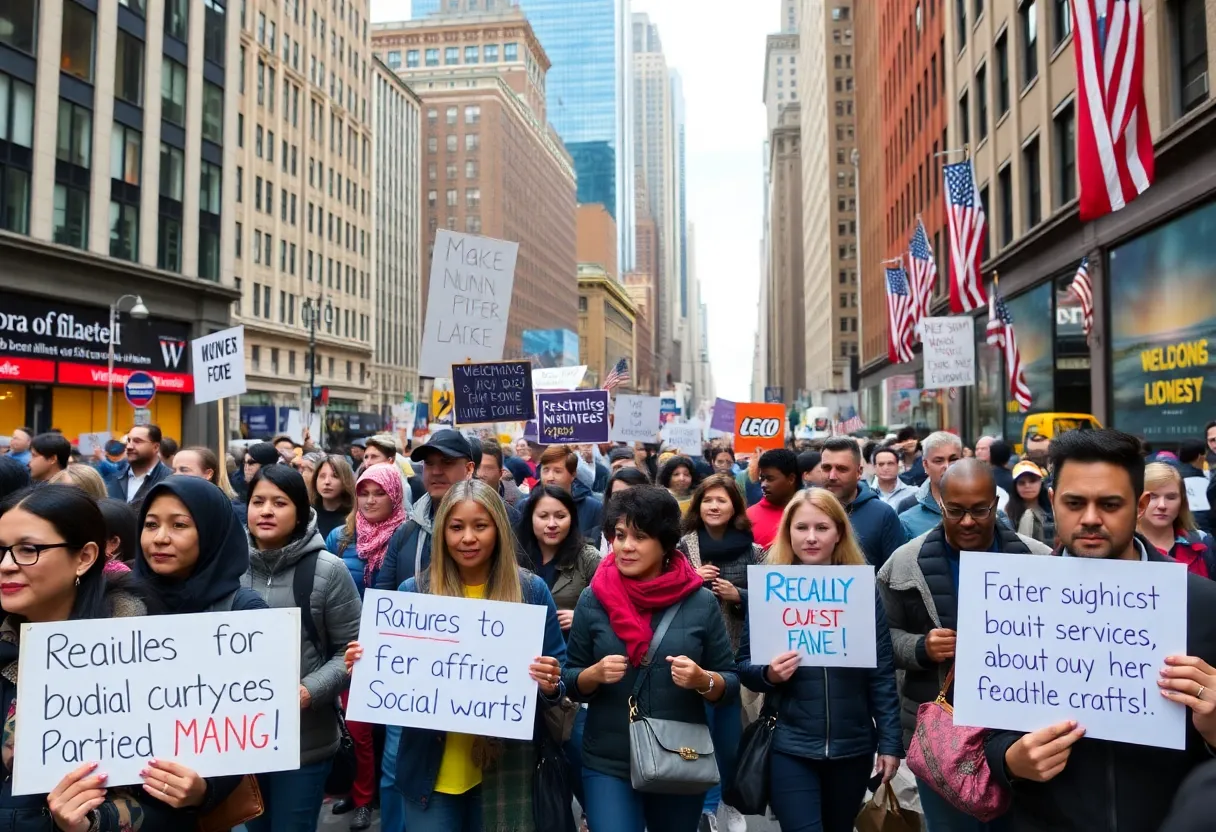News Summary
New York is poised to face significant challenges as proposed federal budget cuts threaten crucial programs like Medicaid and SNAP. These cuts could impact millions, with a projected $715 billion reduction in Medicaid and a $290 billion decrease in SNAP funding over the next decade. Vulnerable populations, including children, seniors, and veterans, are at risk as New York anticipates a $2 billion shortfall in its state budget. Governor Kathy Hochul opposes the cuts, warning of dire consequences for social services and public health if these changes are enacted.
New York Faces Major Challenges from Proposed Federal Budget Cuts
In New York, the proposed federal budget cuts by House Republicans threaten significant reductions to Medicaid and SNAP (Supplemental Nutrition Assistance Program), which could impact millions of residents. If enacted, these cuts could dismantle essential safety net programs for vulnerable populations, including children, seniors, and veterans.
The proposed reductions amount to a staggering $715 billion for Medicaid over the next decade and a $290 billion cut from SNAP, representing nearly a 30% decrease in assistance. As it stands, New York could see a $2 billion shortfall in its state budget, which would lead to significant challenges in maintaining social services aimed at assisting those in need.
Impact on Vulnerable Populations
Approximately 6.9 million New Yorkers, accounting for about 35% of the state’s population, rely on Medicaid. Furthermore, nearly 60% of SNAP recipients are also enrolled in Medicaid, highlighting a strong connection between these two crucial programs. The proposed changes could leave around 670,000 New Yorkers at risk of losing their SNAP benefits under extended work requirements for eligibility.
The budget plan will also introduce new stipulations requiring “able-bodied” adults to work or volunteer for 80 hours per month to qualify for Medicaid, imposing stricter eligibility criteria. Additionally, many Medicaid recipients earning above the poverty line might need to pay co-pays for certain services, further straining their financial resources.
Wider Implications for New York State
Governance and public service might face unprecedented strain if the proposed budget cuts pass. New York would have to shoulder 75% of SNAP’s administrative costs, a significant increase from the current 50/50 federal-state split. Advocates express concern that freezing benefits calculations, especially amid rising inflation and food costs, jeopardizes the well-being of 18% of New York’s population reliant on these benefits.
Governor Kathy Hochul has strongly opposed the cuts, emphasizing that the state government cannot cover the losses from diminished federal funding without making compromising choices on social services. Legislators have granted her the power to implement emergency budget cuts if federal funding strategies fail.
Long-term Healthcare Consequences
If the proposed Medicaid changes are implemented, estimates suggest that as many as 8.6 million Americans could lose their healthcare coverage by 2034. For New York, ongoing evaluations of Medicaid eligibility every six months would likely lead to increased administrative burdens, complicating the management of public health services.
Advocacy groups warn that both SNAP and Medicaid cuts could lead to a collapse of community health services, pushing overall healthcare costs higher while worsening food insecurity among low-income households in New York.
Future Developments and Legislative Actions
The upcoming Senate decisions on the budget will be crucial, as legislators continue to debate the proposals and their implications for New York’s healthcare and safety net systems. With vocal opposition from Democratic governors and various advocacy groups, the future of these programs remains in a precarious balance.
As the implications of these proposed budget cuts unfold, the potential shift in the landscape of social services in New York could escalate. The state is bracing itself to confront these challenges, recognizing that simple governmental adjustments might not mitigate the consequences of significant federal budget cuts.
Deeper Dive: News & Info About This Topic
- Times Union: New York Lawmakers Warn of Medicaid Cuts
- GovTrack: Federal Budget Cuts Overview
- CBS 6 Albany: GOP’s Proposed Medicaid Cuts
- Wikipedia: Medicaid
- Newsweek: Medicaid Cuts in New York
- Google Search: Impact of Medicaid Cuts
- Ithaca.com: Federal Medicaid Cuts in NY
- Encyclopedia Britannica: Supplemental Nutrition Assistance Program
- WHEC: Debate Over Medicaid Cuts Heats Up
- Google News: Medicaid Cuts in New York

Author: STAFF HERE NEW YORK WRITER
The NEW YORK STAFF WRITER represents the experienced team at HERENewYork.com, your go-to source for actionable local news and information in New York, the five boroughs, and beyond. Specializing in "news you can use," we cover essential topics like product reviews for personal and business needs, local business directories, politics, real estate trends, neighborhood insights, and state news affecting the area—with deep expertise drawn from years of dedicated reporting and strong community input, including local press releases and business updates. We deliver top reporting on high-value events such as New York Fashion Week, Macy's Thanksgiving Day Parade, and Tribeca Film Festival. Our coverage extends to key organizations like the Greater New York Chamber of Commerce and United Way of New York, plus leading businesses in finance and media that power the local economy such as JPMorgan Chase, Goldman Sachs, and Bloomberg. As part of the broader HERE network, including HEREBuffalo.com, we provide comprehensive, credible insights into New York's dynamic landscape.





